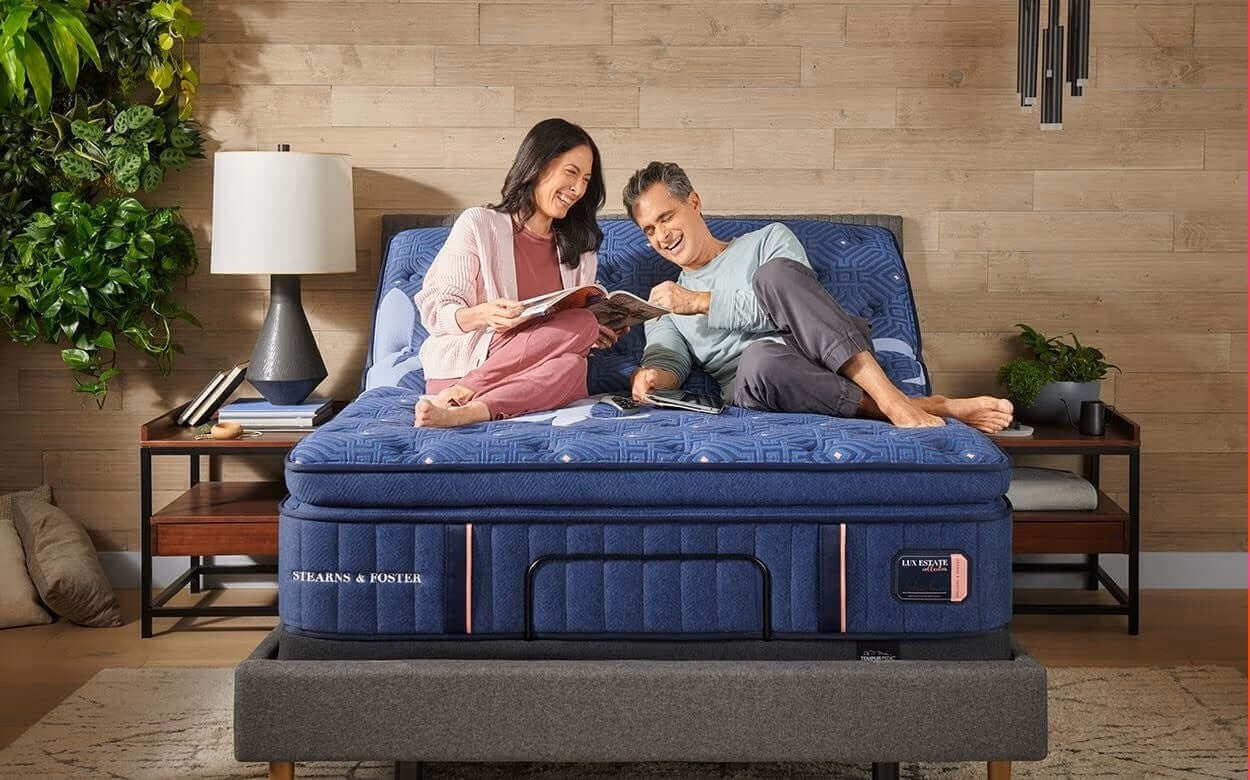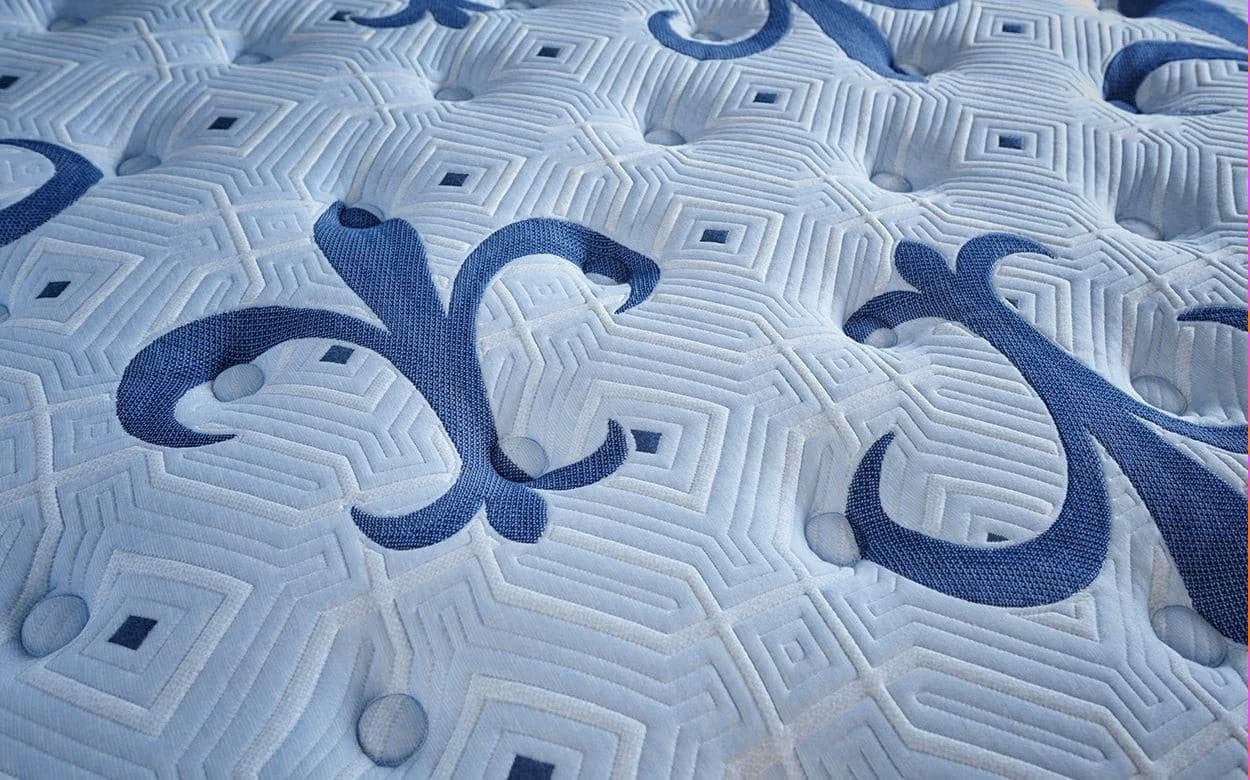When it comes to creating the perfect sleep environment, choosing the right mattress size plays a pivotal role. A full-size mattress, also known as a double bed, is one of the most popular mattress dimensions in the U.S. and worldwide. It strikes a balance between space efficiency and comfort, making it ideal for single adults, guest rooms, teens, and even couples who prefer a cozier sleeping setup.
But the mattress itself is only half the equation room layout, furniture placement, and space optimization are just as crucial. In this guide, we’ll cover full-size mattress measurements, pros and cons, room layout tips, and product recommendations, helping you decide if this mattress size suits your needs.
Table of Content
- Introduction
- Key Takeaways
- Standard Full-Size Mattress Measurements
- Full vs. Other Mattress Sizes (Twin, Queen, King)
- Who Should Choose a Full-Size Mattress?
- Room Layout Tips for Full-Size Beds
- Common Mistakes to Avoid in Room Setup
- Comparison Table
- Visual Graph: Mattress Performance Comparison
- Product Review
- Conclusion
- Frequently Asked Questions
Key Takeaways
- A full-size mattress measures 54" wide x 75" long, making it wider than a twin but smaller than a queen.
- Best suited for single adults, teens, and guest rooms.
- Room layout should consider walking space, nightstands, and closet access.
- Full-size beds save space and cost less than queens or kings.
- Not always ideal for couples especially taller sleepers.
Standard Full-Size Mattress Measurements
The standard dimensions of a full-size mattress are:
- Width: 54 inches (4 feet, 6 inches)
- Length: 75 inches (6 feet, 3 inches)
- Surface Area: 4,050 square inches
For comparison:
- A full mattress is 15 inches wider than a twin, providing extra space for adults.
- It’s 6 inches narrower and 5 inches shorter than a queen, making it less ideal for couples who need space.
Some mattress brands also offer a Full XL size (54" x 80"), which provides 5 extra inches in length perfect for taller individuals.
Full vs. Other Mattress Sizes
When shopping, it’s helpful to compare full-size beds with other mattress options:
|
Mattress Size |
Dimensions (W x L) |
Best For |
Pros |
Cons |
|
Twin |
38" x 75" |
Kids, small rooms |
Compact, budget-friendly |
Too small for adults |
|
Twin XL |
38" x 80" |
College dorms, tall teens |
Extra length |
Still narrow |
|
Full (Double) |
54" x 75" |
Single adults, guest rooms |
More width, affordable |
Short for tall sleepers, tight for couples |
|
Queen |
60" x 80" |
Couples, master bedrooms |
Popular, good balance |
Requires more space |
|
King |
76" x 80" |
Couples who need space |
Spacious, luxury |
Expensive, space-heavy |
|
California King |
72" x 84" |
Tall couples |
Longest option |
Narrower than standard king |
Who Should Choose a Full-Size Mattress?
A full-size mattress is a practical choice for:
- Single adults who want more space than a twin.
- Teens transitioning from a twin to a larger bed.
- Guest bedrooms, offering comfort without taking up too much space.
- Budget-conscious buyers, since full mattresses are cheaper than queens.
Not recommended for:
- Couples who toss and turn.
- Tall sleepers V over 6'2" (unless choosing a Full XL).
- Families who co-sleep with kids or pets.
Room Layout Tips for Full-Size Beds
Getting the most from a full mattress means arranging your room smartly:
1. Measure Room Dimensions
Ideally, your bedroom should be at least 9’ x 10’ for a full mattress. This leaves walking space and furniture placement flexibility.
2. Leave Walking Space
Maintain at least 24–30 inches of clearance on each side of the bed for easy movement.
3. Positioning Options
- Centered Layout: Bed in the middle, nightstands on both sides.
- Corner Layout: Push against one wall to free up space ideal for small rooms.
- Floating Layout: Bed positioned slightly away from the wall to allow airflow and design balance.
4. Furniture Considerations
- Nightstands: Choose slim ones to avoid crowding.
- Closets/Doors: Ensure the bed doesn’t block openings.
- Storage Beds: Great for maximizing small spaces.
5. Lighting & Decor
- Wall-mounted lamps or floating shelves save floor space.
- Use mirrors to make smaller rooms appear larger.
Common Mistakes to Avoid
- Overcrowding the room with large furniture.
- Ignoring clearance space, making the room feel cramped.
- Not accounting for bed height taller frames can reduce visual space.
- Blocking windows or natural light with bed placement.
Comparison Table: Full vs. Queen vs. Twin
|
Feature |
Twin |
Full |
Queen |
|
Width |
38" |
54" |
60" |
|
Length |
75" |
75" |
80" |
|
Best For |
Kids, teens |
Single adults, guests |
Couples |
|
Space Needed |
Smallest |
Moderate |
Larger bedroom |
|
Price Range |
Lowest |
Mid |
Higher |
Visual Graph: Mattress Performance Comparison
Here’s a graph comparing Memory Foam, Innerspring, and Hybrid full-size mattresses on key features:

Product Review : Best Full Size Mattress by Types
1. Memory Foam Full Mattress (Full)
Overview:
A memory foam full-size mattress is designed with pressure-relieving foam layers that contour closely to the body, adapting to your natural curves for optimal support. This makes it an excellent choice for side sleepers, individuals with joint or back pain, and anyone who values motion isolation.
Unlike traditional innerspring models, memory foam absorbs movement, so if you share the bed with a partner or pet, you won’t feel disturbances when they shift during the night. Many modern memory foam mattresses also include cooling technologies such as gel-infused foam or open-cell construction to combat heat retention.
Key Features:
- Pressure relief for joints
- Excellent motion isolation
- Medium to soft firmness options
- Long-lasting durability
|
Pros |
Cons |
|
Great pressure relief |
May retain heat |
|
No motion transfer |
Can be expensive |
|
Good for back pain |
Less bounce |
2. Innerspring Full Mattress (Full)
Overview:
An innerspring full-size mattress is built with a coil support core that offers a classic, bouncy feel. It’s one of the most affordable and widely available mattress types, making it popular for guest rooms, teens, and budget-conscious buyers. The open coil structure promotes excellent airflow, keeping the sleep surface cool throughout the night.
Innerspring mattresses are also known for their edge support, which makes the bed feel larger and more supportive when sitting or sleeping near the sides. However, they don’t contour as closely to the body as foam or hybrid models, which may not suit side sleepers who need extra pressure relief.
Key Features:
- Affordable pricing
- Strong edge support
- Cooling due to airflow
- Wide availability
|
Pros |
Cons |
|
Budget-friendly |
Less contouring |
|
Cooling sleep surface |
Shorter lifespan |
|
Firm and supportive |
Can be noisy |
3. Hybrid Full Mattress (Full)
Overview:
A hybrid full-size mattress blends the best qualities of memory foam and innerspring systems. Typically constructed with a coil base for sturdy support and airflow, topped with layers of foam for contouring comfort, hybrids are versatile and designed to suit most sleeping positions.
They offer the bounce and durability of coils while providing the pressure relief of foam. Many hybrid models feature cooling technologies such as gel-infused foams or breathable covers, making them a good fit for hot sleepers. Hybrids are often marketed as premium options because of their balanced feel, long-lasting durability, and adaptability for couples, single sleepers, and combination sleepers alike.
Key Features:
- Balanced feel (support + contour)
- Good durability
- Cooling gel options
- Wide firmness range
|
Pros |
Cons |
|
Best of both worlds |
Higher cost |
|
Durable and supportive |
Heavier |
|
Suitable for all sleepers |
May require deep sheets |
Conclusion
A full mattress offers a balance of comfort, affordability, and space-saving design. It’s perfect for single adults, teens, and guest rooms but less ideal for couples who need personal space or tall individuals. When paired with a thoughtful room layout, it can transform even small bedrooms into cozy, functional sleep spaces.
Frequently Asked Questions
1. What is the exact size of a full-size mattress?
A full mattress measures 54 inches wide by 75 inches long.
2. Is a full bed big enough for two adults?
It can fit two, but space will be tight. A queen is usually better for couples.
3. What’s the difference between a full and a double bed?
They are the same size; “double bed” is simply another name.
4. Do full-size mattresses come in extra-long versions?
Yes, a Full XL measures 54" x 80".
5. What size room fits a full mattress best?
A minimum of 9’ x 10’ works well for a full-size bed.
6. Are full-size mattresses good for kids?
Yes, they provide plenty of room to grow compared to a twin.
7. How much does a full mattress cost?
Depends on which material and brand you are buying.
8. Can you use queen sheets on a full mattress?
They’ll be loose. Always use fitted full sheets for a snug fit.
9. Is a full mattress heavy to move?
They’re lighter than queens or kings, making them easier to handle.
10. Should I choose a full or queen mattress?
If budget and space are priorities, go with a full. For couples, a queen is better.


